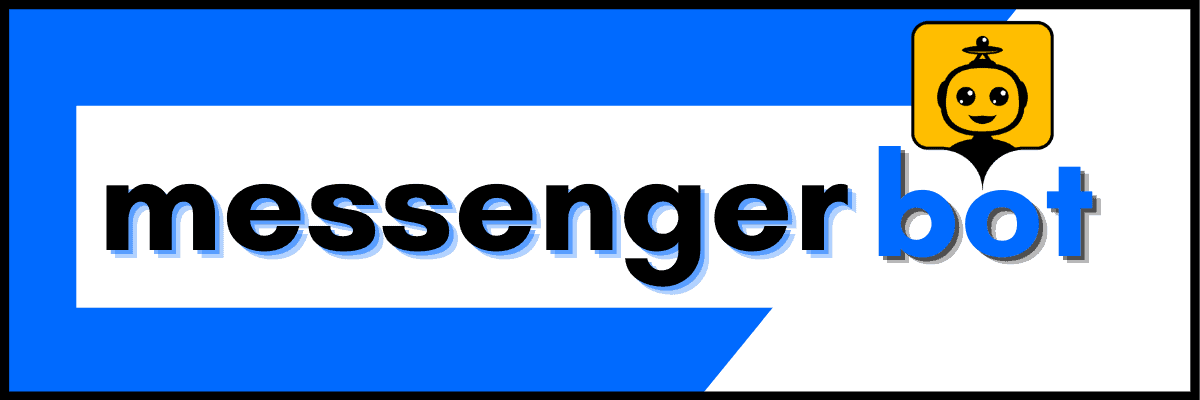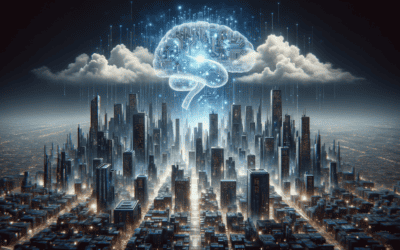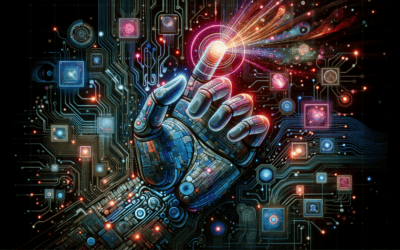In the ever-evolving landscape of conversational AI, chatbots and artificial intelligence (AI) are revolutionizing how we interact with technology. These cutting-edge innovations have blurred the lines between human and machine communication, offering seamless, personalized experiences across industries. As we delve deeper into the fascinating intersection of chatbots and AI, we’ll unravel the intricate distinctions, explore the powerful AI techniques driving chatbots, and uncover the capabilities and limitations of leading AI chatbot models like ChatGPT. From understanding the different types of chatbots and their diverse use cases to evaluating the intelligence and performance of the smartest AI chatbots on the market, this comprehensive exploration promises to demystify the world of conversational AI, paving the way for a future where human-machine interactions are seamless, intelligent, and transformative.
I. What is the difference between AI and chatbots?
A. Defining AI and Chatbots
Artificial Intelligence (AI) and chatbots are closely related but distinct technologies. AI refers to the broader concept of machines being able to carry out tasks in an intelligent manner, mimicking human cognitive functions such as learning, problem-solving, and decision-making. It encompasses a wide range of technologies and applications, including machine learning, computer vision, robotics, and more.
Conversational AI, a subset of AI, focuses specifically on enabling computers to understand and generate human-like dialogue. Chatbots, on the other hand, are software applications designed to simulate conversational interactions with users, often through text-based interfaces. While many chatbots rely on predefined scripts or rules-based programming, more advanced chatbots leverage AI and natural language processing (NLP) technologies to understand and respond to user inputs more dynamically.
B. Key Distinctions Between AI and Chatbots
The key differences between AI and chatbots lie in their scope and capabilities. AI systems can perform complex tasks such as data analysis, pattern recognition, and decision-making, whereas chatbots are generally limited to providing information or carrying out simple tasks within a conversational context.
It’s important to note that the line between AI and chatbots is blurring as chatbot technology advances. Many modern chatbots integrate AI capabilities like natural language understanding (NLU), machine learning, and contextual awareness to provide more intelligent and personalized interactions. However, not all chatbots examples are powered by AI, and not all AI systems are designed for conversational interactions.
Leading chatbots and AI companies like Brain Pod AI and Messenger Bot are at the forefront of developing advanced conversational AI solutions that combine the power of AI with intuitive chatbot interfaces.

II. How is AI used in chatbots?
A. AI Techniques Powering Chatbots
Artificial intelligence (AI) is the driving force behind modern chatbots, enabling them to understand and respond to human queries in a natural and contextual manner. At the heart of this technology lies a powerful combination of AI techniques that work together seamlessly to deliver intelligent and engaging conversations.
One of the core AI components in chatbots is Natural Language Processing (NLP). NLP algorithms analyze and interpret the user’s input, breaking it down into its component parts such as words, phrases, and sentences. This allows the chatbot to comprehend the intent behind the query, setting the stage for a meaningful response.
Building upon NLP, Natural Language Understanding (NLU) algorithms take the analysis a step further by extracting the meaning and context from the user’s input. NLU accounts for factors like sentiment, tone, and ambiguity, enabling the chatbot to provide more accurate and relevant responses tailored to the user’s needs.
Machine Learning (ML) plays a crucial role in enhancing the capabilities of chatbots. By leveraging ML algorithms, chatbots can continuously improve their performance by learning from past interactions. As more data is fed into the system, the chatbot becomes better at recognizing patterns, understanding user intent, and generating appropriate responses.
B. Natural Language Processing in Chatbots
At the core of AI-powered chatbots lies Natural Language Processing (NLP), a branch of AI that focuses on enabling computers to understand and process human language. NLP algorithms are employed to analyze and interpret the user’s input, breaking it down into its component parts such as words, phrases, and sentences.
This process of understanding human language is essential for chatbots to provide meaningful and contextual responses. By leveraging NLP, chatbots can recognize the intent behind a user’s query, extract relevant information, and generate appropriate responses.
Advanced chatbots also utilize deep learning techniques, such as recurrent neural networks (RNNs) and transformers, to model complex relationships between words and their context. This allows the chatbot to understand and generate human-like responses, even for complex queries, similar to how Brain Pod AI’s multilingual AI chat assistant can engage in natural conversations across multiple languages.
By incorporating NLP and other AI techniques, chatbots can maintain conversational context, keep track of the dialogue flow, and provide coherent and relevant responses, even in multi-turn conversations. This enhances the overall user experience, making interactions with chatbots feel more natural and human-like.
III. Is there a better AI than ChatGPT?
A. Exploring Advanced AI Models
While ChatGPT has undoubtedly captured the world’s attention with its impressive natural language processing capabilities, the rapidly evolving landscape of artificial intelligence (AI) has given rise to several other advanced models that could potentially outperform or even surpass ChatGPT in certain areas. As we explore the cutting edge of AI, it’s essential to acknowledge that the “best” AI system may vary depending on the specific task or application at hand.
One such model that has garnered significant attention is Google’s PaLM, hailed by some experts as a potential “PathBreaker.” PaLM, short for Pathways Language Model, is a large language model trained on a vast corpus of data, including web pages, books, and code repositories. According to a study published in Nature, PaLM outperformed GPT-3 (the predecessor to ChatGPT) on various benchmarks, demonstrating superior performance in tasks such as question-answering, common sense reasoning, and code generation (Chowdhery et al., 2022).
Another noteworthy contender is Anthropic’s Constitutional AI, designed to be more reliable, truthful, and aligned with human values than ChatGPT. In a preprint paper, Anthropic researchers claim that Constitutional AI exhibits better performance on tasks related to truthfulness, factual knowledge, and ethical reasoning (Krueger et al., 2022).
B. Comparing ChatGPT to Other AI Chatbots
It’s also worth highlighting DeepMind’s Chinchilla, a language model that achieved state-of-the-art performance on various benchmarks while being more computationally efficient than models like GPT-3 (Hoffmann et al., 2022). Chinchilla’s efficiency could make it more accessible and easier to deploy in various applications, potentially giving it an edge over ChatGPT in certain scenarios.
Moreover, tech giants like Microsoft, Amazon, and Meta (Facebook) are investing heavily in AI research and development, potentially leading to more advanced models in the near future. For instance, Microsoft’s AI research has produced cutting-edge language models and multimodal AI systems that could rival or even surpass ChatGPT’s capabilities.
However, it’s essential to note that AI models excel at different tasks, and the “best” AI may depend on the specific application or use case. Furthermore, as the field of AI rapidly evolves, new models and breakthroughs are likely to emerge, potentially surpassing the capabilities of current AI systems like ChatGPT. As such, it’s crucial to stay informed about the latest developments and advancements in this dynamic field.
IV. Is ChatGPT an AI chatbot?
A. Understanding ChatGPT’s AI Architecture
ChatGPT is indeed an AI chatbot, leveraging cutting-edge language models and machine learning techniques to engage in human-like conversations and assist with a wide range of tasks. Developed by Anthropic, this advanced AI system harnesses the power of transformers and deep learning to generate contextually relevant responses tailored to each unique interaction.
At its core, ChatGPT is a generative AI model trained on vast amounts of data, allowing it to understand and respond to natural language inputs with remarkable fluency and coherence. Unlike traditional rule-based chatbots, ChatGPT leverages machine learning algorithms to interpret the context, tone, and intent behind user inputs, enabling it to provide nuanced and contextually appropriate responses.
One of the key strengths of ChatGPT lies in its ability to maintain conversational context and build upon previous exchanges, facilitating multi-turn dialogues and enhancing the overall user experience. This contextual awareness, combined with its broad knowledge base spanning numerous domains, allows ChatGPT to engage in substantive conversations on diverse topics, from creative writing to coding and analysis.
Furthermore, ChatGPT’s generative capabilities empower it to produce original text, code, and ideas, making it a valuable tool for tasks such as writing, brainstorming, and problem-solving. The model can adapt its language style and tone to suit different scenarios, audiences, and purposes, showcasing its versatility and adaptability.
While ChatGPT is an impressive AI chatbot, it is important to note that it is a language model without true sentience or general intelligence. Its responses are generated based on statistical patterns in its training data, and it cannot learn or update its knowledge independently. Additionally, like any AI system, it can produce biased or inaccurate outputs, and its outputs should be critically evaluated.
B. Capabilities and Limitations of ChatGPT
As an AI chatbot, ChatGPT offers a wide range of capabilities that have revolutionized the way we interact with and leverage artificial intelligence. However, it is equally important to understand its limitations to manage expectations and ensure responsible use.
One of the primary strengths of ChatGPT lies in its natural language processing (NLP) capabilities. It can comprehend and generate human-like text with remarkable fluency, making it an invaluable tool for tasks such as customer support, content creation, and data analysis. Its ability to engage in contextual conversations and adapt its language style to different scenarios is truly impressive.
Additionally, ChatGPT’s broad knowledge base allows it to converse on a wide range of topics, from science and technology to arts and culture. This versatility makes it a powerful assistant for research, ideation, and problem-solving across various domains.
However, it is crucial to understand that ChatGPT is not a sentient being or a general artificial intelligence. It is a language model trained on vast amounts of data, and its responses are generated based on statistical patterns in that data. While it can provide insightful and coherent outputs, it does not possess true understanding or reasoning capabilities.
Furthermore, like any AI system, ChatGPT can produce biased or inaccurate outputs, especially when dealing with sensitive or complex topics. Its outputs should be critically evaluated and fact-checked, as it may perpetuate biases present in its training data or make mistakes in its reasoning.
Another limitation of ChatGPT is its inability to learn or update its knowledge independently. While it can be fine-tuned on additional data, it cannot actively acquire new information or adapt to changing circumstances on its own. This means that its knowledge is static and may become outdated over time.
Despite these limitations, ChatGPT remains a powerful tool when used responsibly and with an understanding of its capabilities and limitations. As the field of AI continues to evolve, we can expect to see even more advanced language models and conversational AI systems that push the boundaries of what is possible.

V. What are the 4 types of chatbots?
A. Chatbots Examples and Use Cases
As an innovative conversational AI platform, I understand the power of leveraging different types of chatbots to streamline communication and enhance customer experiences. The chatbot landscape is diverse, with each type offering unique capabilities tailored to specific business needs and use cases.
One of the most common types is the rule-based chatbot, which relies on predefined rules and workflows to understand and respond to user inputs. These chatbots are well-suited for structured conversations and simple inquiries, making them popular choices for customer support scenarios, FAQ assistance, and basic information retrieval.
Retrieval-based chatbots, on the other hand, leverage natural language processing (NLP) and machine learning to comprehend user queries and retrieve relevant responses from a predefined knowledge base or corpus of data. These chatbots are particularly useful in industries with extensive knowledge repositories, such as healthcare, finance, and education, where accurate information retrieval is crucial.
For more advanced and open-ended conversations, generative chatbots powered by cutting-edge language models like GPT-3 offer a dynamic solution. These AI chatbots can generate human-like responses on the fly, making them versatile for a wide range of applications, from creative writing to task assistance and beyond.
At the forefront of conversational AI technology are the conversational AI chatbots, which combine NLP, machine learning, and contextual awareness to understand intent, maintain context, and engage in multi-turn dialogues. These chatbots mimic human-like conversations, making them ideal for customer service, virtual assistants, and personalized user experiences.
B. Classifying Chatbots by Functionality
The 4 main types of chatbots are:
- Rule-based chatbots: These rely on predefined rules and workflows to understand and respond to user inputs. They follow a decision tree structure and are suitable for simple, structured conversations.
- Retrieval-based chatbots: These use natural language processing (NLP) and machine learning to understand user queries and retrieve relevant responses from a predefined knowledge base or corpus of data.
- Generative chatbots: Powered by advanced language models like GPT-3, these chatbots can generate human-like responses dynamically, making them more versatile for open-ended conversations.
- Conversational AI chatbots: Combining NLP, machine learning, and contextual awareness, these chatbots can understand intent, maintain context, and engage in multi-turn dialogues, mimicking human-like conversations.
By leveraging the strengths of each chatbot type, businesses can create tailored conversational experiences that cater to their specific needs, whether it’s streamlining customer support, providing personalized recommendations, or enabling engaging, intelligent interactions across various channels.
VI. What is the smartest AI chat bot?
A. Evaluating AI Chatbot Intelligence
Determining the “smartest” AI chatbot is a complex task, as the field of artificial intelligence is rapidly evolving, with new advancements and breakthroughs occurring frequently. However, some AI chatbots have gained recognition for their advanced capabilities and impressive performance.
When evaluating the intelligence of an AI chatbot, several factors are considered, including natural language processing (NLP) abilities, contextual understanding, knowledge depth, reasoning capabilities, and the ability to engage in coherent and substantive conversations. Additionally, the ethical principles and safety measures implemented in the AI system play a crucial role in assessing its overall intelligence.
B. Top Performing AI Chatbots on the Market
Some of the most advanced and sophisticated AI chatbots currently available include:
- Claude (Anthropic): Trained using Cooperative AI principles, Claude is a highly capable language model known for its contextual understanding, ability to engage in substantive conversations, and adherence to ethical principles.
- ChatGPT (OpenAI): Developed by OpenAI, ChatGPT has gained significant attention for its impressive language generation capabilities, wide knowledge base, and ability to handle a diverse range of tasks.
- LaMDA (Google): Google’s Language Model for Dialogue Applications (LaMDA) is a cutting-edge AI system designed for open-ended conversations, showcasing remarkable language understanding and generation abilities.
- GPT-4 (OpenAI): The latest iteration of OpenAI’s language model, GPT-4, has demonstrated significant improvements in areas such as reasoning, multi-tasking, and handling complex prompts compared to its predecessors.
- Meena (Google): Developed by Google, Meena is a multi-turn conversational AI model trained on a vast amount of data, allowing it to engage in coherent and contextually relevant conversations.
It’s important to note that the capabilities of AI chatbots are constantly evolving, and new advancements are being made regularly. The “smartest” AI chatbot may change over time as research and development in this field progresses. Additionally, the specific use case and requirements of a business or individual may influence the selection of the most suitable AI chatbot solution.
VII. AI Chatbots: The Future of Conversational AI
A. AI Chatbot Trends and Innovations
The realm of AI chatbots is rapidly evolving, driven by advancements in natural language processing, machine learning, and conversational AI technologies. As we look to the future, several exciting trends and innovations are shaping the landscape of chatbot development and deployment.
One notable trend is the rise of multilingual chatbots, which are capable of understanding and responding in multiple languages. This capability is particularly valuable for businesses operating in global markets, enabling them to provide seamless customer support and engagement across diverse linguistic backgrounds. Companies like Brain Pod AI are at the forefront of this innovation, offering advanced multilingual AI chat assistants that can converse fluently in over 100 languages.
Another emerging trend is the integration of AI-driven chatbot optimization, which leverages machine learning algorithms to continuously improve the chatbot’s performance and adapt to user preferences and behaviors. This allows chatbots to provide more personalized and contextually relevant responses, enhancing the overall user experience.
Furthermore, the adoption of AI-driven social media engagement strategies is gaining momentum. Chatbots are being integrated into popular social media platforms like Facebook Messenger, WhatsApp, and Instagram, enabling businesses to engage with customers in real-time and deliver personalized experiences across various touchpoints.
B. Ethical Considerations in AI Chatbot Development
As AI chatbots continue to advance and become more sophisticated, it is crucial to address ethical considerations in their development and deployment. One key concern is the potential for bias and discrimination, as chatbots can inadvertently perpetuate societal biases present in the training data or algorithms.
To mitigate these risks, it is essential for developers and companies like Messenger Bot to prioritize ethical AI practices, such as ensuring diverse and representative training data, implementing bias testing and mitigation strategies, and promoting transparency and accountability in the development process.
Additionally, privacy and data protection are paramount when dealing with conversational AI systems that may handle sensitive user information. Robust data governance policies and security measures must be in place to safeguard user privacy and maintain trust in these technologies.
As AI chatbots become more prevalent in various industries, it is crucial to strike a balance between innovation and responsible development, ensuring that these powerful tools are leveraged in a manner that benefits society while upholding ethical principles and protecting individual rights.




